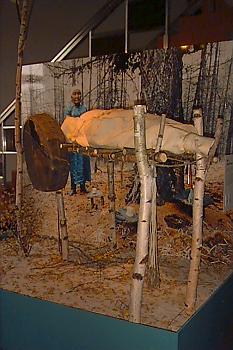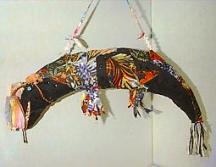During soviet time, his clandestine work helped to preserve his people's traditions. Even under the eyes of the KGB, he managed to document shamanism and it's ceremonies. He told me, that the buben, the traditional shaman drum, was replaced by a white flag, so a ceremony wouldn't be noticed.
And it is proved, that shamans in other parts of Siberia, in Buryatia f.e., who still used the buben, were arrested and opressed because of this.
After the decrease of the GUS, Kenin - Lopsang continued with this work, worked at the Museum of Shamanism in Kyzyl and was co-founder of the Shaman-Association of Tuva. This association is very necessary, as after the fall of communism, a lot of support from many parts of the world was given to the 're - introduction of Buddhism' in this region, but only few support was offered to Shamanism, which is the oldest and most original belief here.
|



